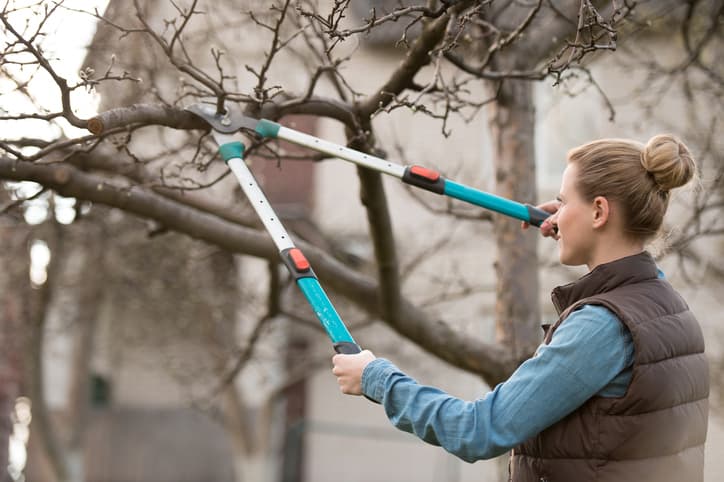Problems Around Neighbour’s Trees And Your Property
Cutting neighbouring trees from your property

Neighbourly disputes can, unfortunately, be quite common. We can’t choose the people who surround our home, but their behaviour can sometimes have an impact on us. Noise issues, boundary disputes and inappropriate car parking are just some of the problems that can arise with our neighbours.
But what are the rules around overgrown plants that begin to encroach on your property from your neighbour’s garden? When your own outdoor space is perfectly pruned, iit can be irritating when straggly branches begin to reach over the fence. Can you request that your neighbour trim their plants and trees, for instance, so they are no longer on your property? Or can you even cut such overgrowth yourself?
It seems this issue first arose in England in 1894, when some oak and elm trees were growing near a boundary. The neighbour took the owner of the trees to court where it was decided that the neighbour could cut the branches back without going onto the owner’s land, thereby cutting only what was growing onto the neighbour’s boundary. This eventually became law in both England and Ireland.
Doing this could, however, create unwanted animosity between you and your neighbour, so in some instances, it may be necessary to ask their permission first and check that they’re happy for you to prune from your side. Other issues can arise when the pruning causes the tree to be dangerous (i.e. likely to fall over), leaves it open to infection or prone to die or results in irreparable damage, and these should be avoided at all costs.
Can a neighbour cut my tree without permission?
When a tree or other plant that is on your boundary has overgrown so that it is encroaching on your property, you are entitled to trim back the part that is on your side to the boundary line without asking for permission. Overhanging branches or roots can be a nuisance, and you don’t have to ask for permission to cut them, as long as you can do so from your side of the boundary.
What you cannot do is cut down any part of the tree that is on a neighbour’s boundary, go onto their property to trim it or cut down the tree itself.
So how can you go about cutting parts of a neighbour’s tree?
First, you should return any parts of the tree or plant that you have removed from your side of the boundary, including any branches, roots or fruits. It is their property and therefore their responsibility to dispose of it. If they don’t wish to have it back, this is fine and it becomes your responsibility. Second, if you are removing any roots, you must do so in a way that will not affect the tree or damage it in any way. If a tree is left unstable and damages your home, your insurance provider may not pay out, so it’s important that you understand what you’re doing when trimming roots.
Can I Trim A Tree With A Preservation order?
This is an instance that proves it’s a good idea to speak to them before cutting your neighbour’s trees. If there is a preservation order on the tree, pruning can only be carried out by the local council, so you won’t be able to prune it even if it is growing onto your boundary.
Can I Use Telescopic Shears?
You can use telescopic shears to trim a neighbour’s tree, however as well as not accessing their property to do so, you cannot encroach on their airspace. This means the shears should only cut the parts that are on your boundary without going too far onto their side accidentally.
Ask a neighbour if they could cut back their tree
Sometimes, it’s not enough to just cut back a tree or plant from your side of the boundary, and further work may be needed. So what are the rules around asking a neighbour to cut their trees back or even down completely?
Trees of significant height along the boundary can reduce the amount of light coming into your home. It is always best to approach your neighbour to see if you can both come to an arrangement. As there is no obligation on your neighbour to reduce the height of their trees, you may offer to pay for the costs involved in the trimming works. Before cutting down or severely altering a tree, you should ensure that it isn’t protected with a preservation order. When this is the case, only the local council can make alterations.
If your neighbour does not agree to cutting back or topping the trees, you may consider speaking to your solicitor to seek a Works Order under Section 45, Land Conveyancing, Law Reform Act 2009, to reduce the height of the trees.
This could be a very expensive option to pursue and you may want to think how this could impact the relationship between you and your neighbour.
Whatever route you decide, never enter your neighbour's property to cut back their trees or remove them completely without their permission. To do so you may find yourself in front of a judge in the Circuit Court with a very high penalty to pay.
Ultimately, the best way to solve issues with overgrown plants is to speak to your neighbour. You may be surprised at how the conversation goes and they may be more than willing to help you out.
